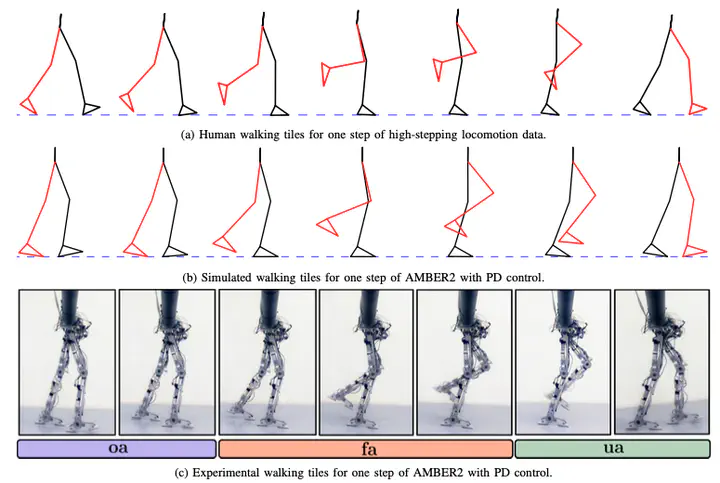
Abstract
This paper presents a formal framework for achieving multi-contact bipedal robotic walking, and realizes this methodology experimentally on two robotic platforms: AMBER2 and Assume The Robot Is A Sphere (ATRIAS). Inspired by the key feature encoded in human walking—multi-contact behavior—this approach begins with the analysis of human locomotion and uses it to motivate the construction of a hybrid system model representing a multi-contact robotic walking gait. Human-inspired outputs are extracted from reference locomotion data to characterize the human model or the spring-loaded invert pendulum (SLIP) model, and then employed to develop the human-inspired control and an optimization problem that yields stable multi-domain walking. Through a trajectory reconstruction strategy motivated by the process that generates the walking gait, the mathematical constructions are successfully translated to the two physical robots experimentally.